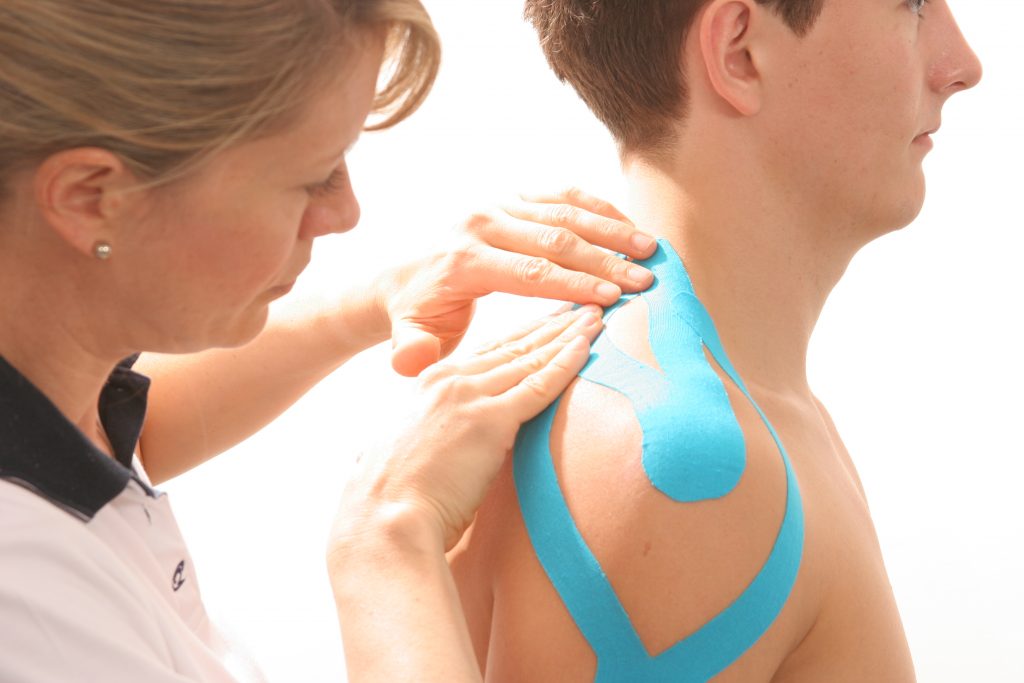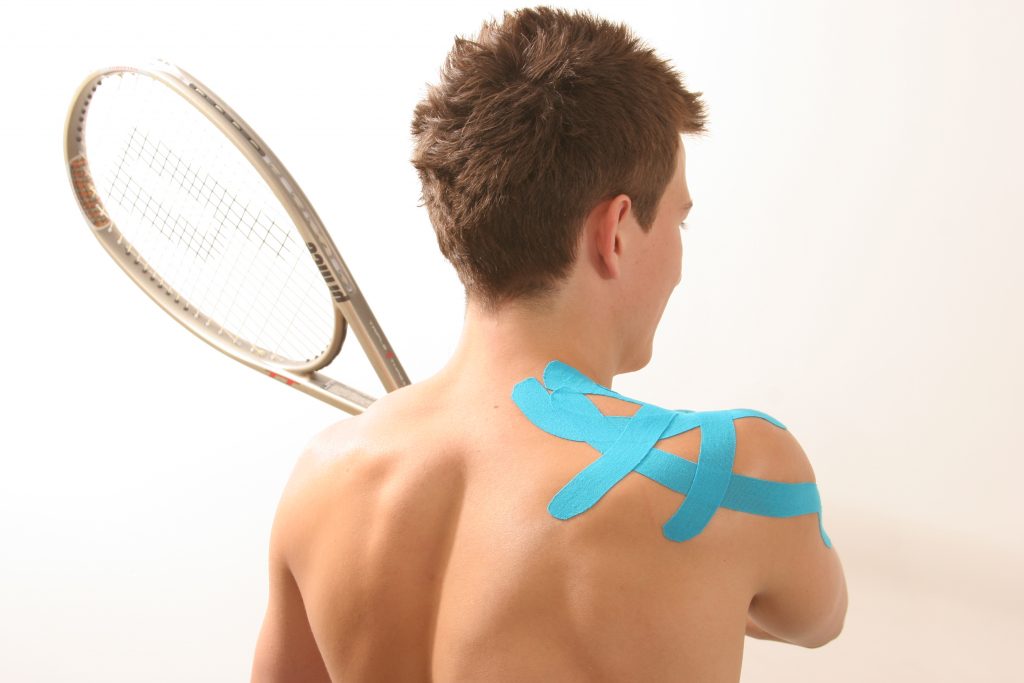Taping
Taping
Taping can be used to either limit unwanted movement at a joint, offload specific muscles or tendons, limit swelling, or facilitate activity and contraction in a weak muscle.


The choice between taping and using a support or strap is dependent upon what it is required. Whereas taping can be more specific to the individual and the injury and can be preferred when competing in events where a strap with plastic buckles or support struts can be banned, such as in rugby, using a support can be preferential during training where the person can apply it themselves and adjust the tension if they feel it is too loose or tight.
At your appointment, your physiotherapist will conduct a thorough physical assessment and advise you as to what would be best for you.
Kinesiology Taping
Many people would have seen athletes at the Olympics sporting strips of brightly coloured tape, but its not just athletes who benefit from this relatively new trend in taping.
Kinesiology taping can be used to facilitate activity in a weak muscle and offload or inhibit chronically tight and painful muscles. So it is a great adjunct in rehabilitation where you want to correct poor motor patterns or postural alignment.


Kinesiology taping has also been found to be very effective in reducing swelling, pain and stimulating lymphatic drainage and so it can be used in treating acute injuries but also patients with lymphodoema.
Added advantages of the tape is that it is very light, breathable and elastic and can stay in place for 3-5 days making it comfortable and user-friendly.
Want to speak to one of our staff about this this service? Get in touch via our contact form or by calling us on (01) 853 2788.
Service practitioners
Shauna O’Connor
View profile
